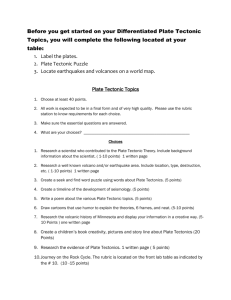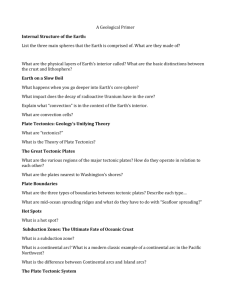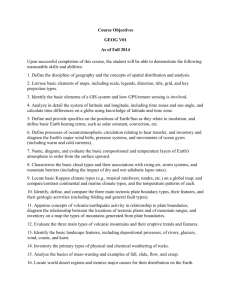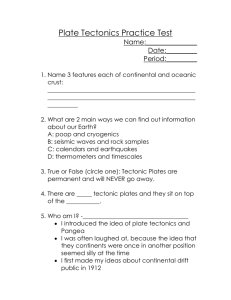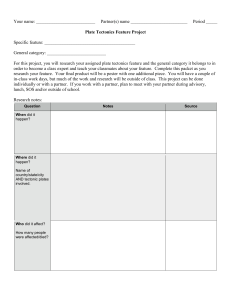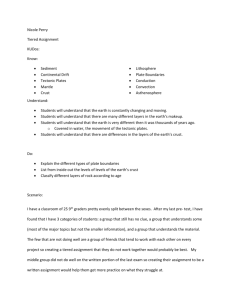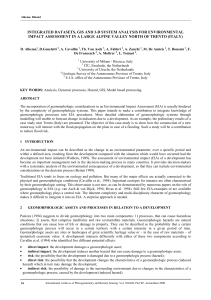GEOSCI_SLO - Ventura College
advertisement
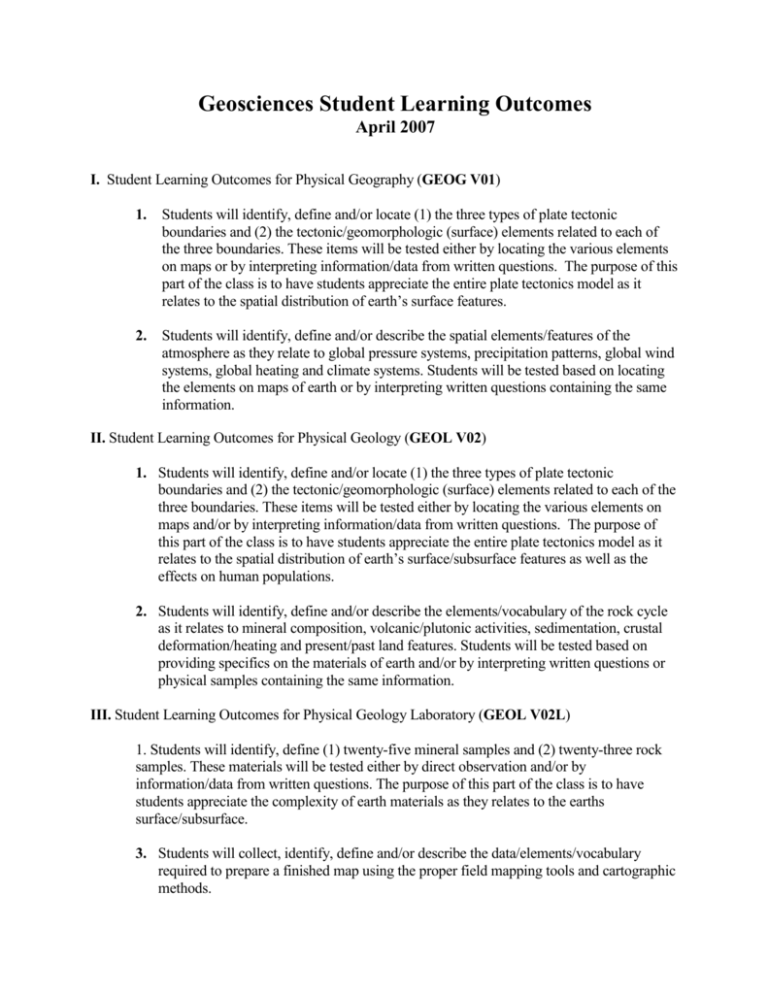
Geosciences Student Learning Outcomes April 2007 I. Student Learning Outcomes for Physical Geography (GEOG V01) 1. Students will identify, define and/or locate (1) the three types of plate tectonic boundaries and (2) the tectonic/geomorphologic (surface) elements related to each of the three boundaries. These items will be tested either by locating the various elements on maps or by interpreting information/data from written questions. The purpose of this part of the class is to have students appreciate the entire plate tectonics model as it relates to the spatial distribution of earth’s surface features. 2. Students will identify, define and/or describe the spatial elements/features of the atmosphere as they relate to global pressure systems, precipitation patterns, global wind systems, global heating and climate systems. Students will be tested based on locating the elements on maps of earth or by interpreting written questions containing the same information. II. Student Learning Outcomes for Physical Geology (GEOL V02) 1. Students will identify, define and/or locate (1) the three types of plate tectonic boundaries and (2) the tectonic/geomorphologic (surface) elements related to each of the three boundaries. These items will be tested either by locating the various elements on maps and/or by interpreting information/data from written questions. The purpose of this part of the class is to have students appreciate the entire plate tectonics model as it relates to the spatial distribution of earth’s surface/subsurface features as well as the effects on human populations. 2. Students will identify, define and/or describe the elements/vocabulary of the rock cycle as it relates to mineral composition, volcanic/plutonic activities, sedimentation, crustal deformation/heating and present/past land features. Students will be tested based on providing specifics on the materials of earth and/or by interpreting written questions or physical samples containing the same information. III. Student Learning Outcomes for Physical Geology Laboratory (GEOL V02L) 1. Students will identify, define (1) twenty-five mineral samples and (2) twenty-three rock samples. These materials will be tested either by direct observation and/or by information/data from written questions. The purpose of this part of the class is to have students appreciate the complexity of earth materials as they relates to the earths surface/subsurface. 3. Students will collect, identify, define and/or describe the data/elements/vocabulary required to prepare a finished map using the proper field mapping tools and cartographic methods. IV. Student Learning Outcomes for Oceanography (GEOL V11) 1. Students will identify, define and/or locate (1) the three types of plate tectonic boundaries and (2) the tectonic/geomorphologic (surface) elements related to each of the three boundaries. These items will be tested either by locating the various elements on maps and/or by interpreting information/data from written questions. The purpose of this part of the class is to have students appreciate and understand the entire plate tectonics model as it relates to the spatial distribution of earth’s seafloor features and history. 2. Students will identify, define and/or describe the spatial elements/features of the oceans as they relate to global pressure systems, salinity patterns, shallow/deep life communities, coastal/seafloor sediments and human usage. Students will be tested based on locating the elements on maps of earth and/or by interpreting written questions containing the same information.

